People have been talking about the different ways to pay to watch TV for decades; The Post even covered it all the way back in 1951. But with the proliferation of platforms, like the forthcoming DC Universe, Disney’s upcoming platform, and a rumored service from Walmart, households may be required to pick from – and pay for – dozens of competing services. Simply put, does streaming TV have a future?

The key to understanding the current picture starts with the history of Netflix 21 years ago. Founded in 1997, the company made its mark with mail-order delivery of rental DVDs. The most familiar iteration of their model, with customers being able to choose movies online and avoid the late fees of brick-and-mortar video stores by mailing the rental back at their convenience, was fully in place by 1999 and disrupting the regular rental business. During a period of struggle in 2000, Netflix suggested that Blockbuster acquire them to handle the rental giant’s online business, but Blockbuster passed.
Netflix survived further rough times through the dot-com crash, but saw things turn around with the nationwide proliferation of cheaper DVD players, a development that brought them a much bigger customer base. By 2007, Netflix had delivered its billionth DVD. However, aware of the popularity of platforms like YouTube, they began their own move into streaming video on the internet. Over the next few years, Netflix subscribers and streaming users increased dramatically, notching over 50 million subscribers by 2014.
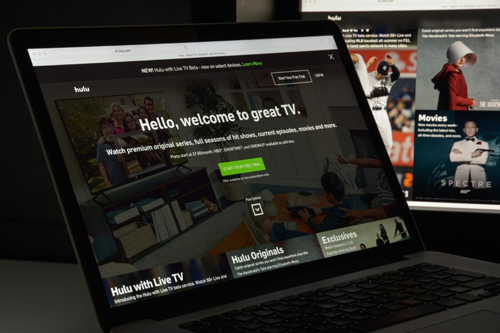
Prior to 2011, Netflix’s main focus continued to be films. Television programming was more widely represented in its competitor, Hulu. Hulu launched in 2008, concentrating on current, past, and now original, series programming. It remains a joint venture of Disney, 21st Century Fox, Comcast, and AT&T/Warner, though Disney’s recent purchase of Fox will see Fox’s share absorbed into Disney’s portion (giving Disney 60% of the service). Another major player was Amazon, who introduced their own vast library of streaming film and television properties in 2011 , including those produced by Amazon Studios. But soon there would be many more.
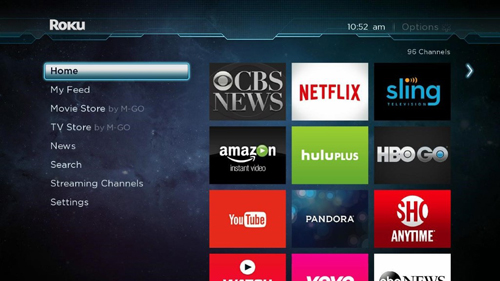
At present, around 20 major streaming services exist, and that doesn’t account for all of the apps and other streaming channels available on various platforms like smart TVs. Roku TVs allow you access to a whopping 1800 streaming channels (including Netflix, Hulu, and Amazon, all of which you must set up an account and pay for individually). And there are new major services on the horizon, including Disney’s unnamed streamer and DC Universe, which launches in September. With so much content available, , are we experiencing a streaming bubble? At what point do you have too many options?
Brandon Peters, media writer for Why So Blu and co-host of the Cult Cinema Cavalcade podcast, says, “Now we are seeing the studios taking back their own content to be exclusive to them (Disney’s upcoming service, CBS All Access) for their own streaming service. How much are they going to put a stronghold on is the big question.” Peters sees this is as part of the problem, with content moving from being widely available across platforms to certain things only being available on certain platforms.
How does that look compared to the current cable situation? Peters says “At some point, the streaming service is very much going to look like the dream a la carte cable everyone always wanted, and you’re going to be paying as much for those in total as you are that cable bill you cut the cord to save money on.”
Peters does see room for a wide landscape of services, but cautions that it may be tough for others. He says, “As long as pricing stays reasonable for these, they can thrive as the streaming version of ’90s pay cable [channels] . . . As far as the DC channel, it’s hard to see that maintaining on its own, but easy to see it thrive as a section of a bigger Warner Bros service.”
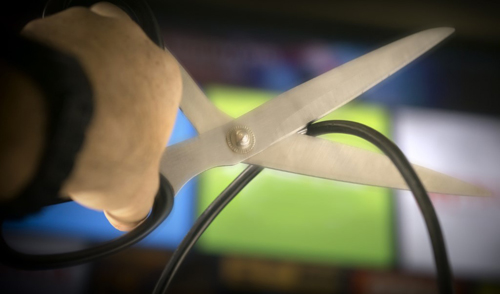
One of the big problems inherent in the system as it stands is that the vast majority of cable customers have deals that bundle together their cable and internet bills. Getting rid of cable and paying separately for internet and all those streaming services might actually end up being more expensive.
Another complication is that cable-cutters might be facing a more fractious market wherein programs that they planned on watching through streaming get increasingly subdivided by a proliferation of apps. If Disney does end up pulling all of their Marvel content from Netflix, then Avengers fans will need to decide which streaming service they are willing to pay for. Similarly, if HBO continues to share programming with Hulu, do customers need both services? And so on. There are seemingly endless permutations to the programming questions, but they all seem to come back to one premise for the customer: can I afford to pay for all of these?

One of the best observers of the film industry and the movement of its money is Scott Mendelson of Forbes. Mendelson envisions a scenario where it might be a little be harder for the more boutique streaming services. He says, “I doubt anyone is going to drop Netflix or Hulu so as to purchase DC Universe. I’m guessing that we’ll see a scenario where you have essentially three “bedrock” services (Amazon, Netflix, Hulu) and everything else becomes a bonus for those who want and can afford it.” He cited CBS All Access as an example, noting that people would really have to want an extra like that when Fox, NBC, and ABC programs are already rolled into Hulu.
Regarding that concept of a streaming bubble, Mendelson does allow for that possibility. He continues, “But yes, I think if everyone and their mother creates their own streaming service with their own original content (along with whatever content they acquire), then the appeal of alleged “one-stop-shopping” will end and the notion of subscribing to six or so streaming channels will be no better/worse than having a full-service cable package.” Mendelson went on to say that, at that juncture, a few big services might become “necessary”, like Netflix, Hulu, and Amazon, while the other services battle for what’s left.
Going back to our original question, it does seem that streaming services have a future. The irony is that in their effort to get away from traditional models, the services might just end up reenacting the path that the studios have been on, gobbling one another up until only a few giants remain. That’s the funny thing about Hollywood; no matter how much original content you have, somebody’s always going to be doing a remake.
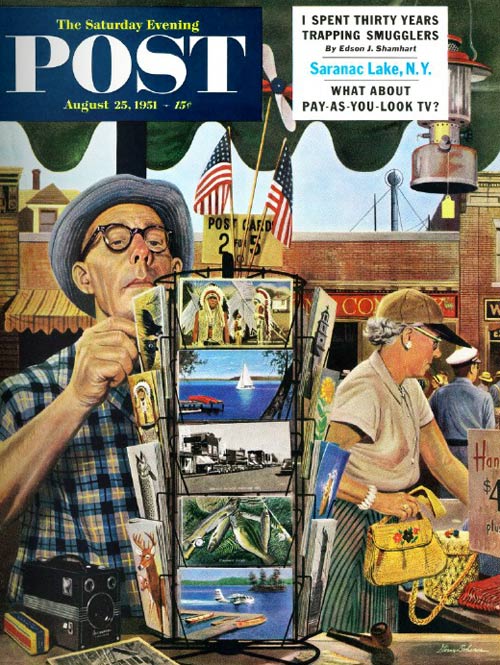
Become a Saturday Evening Post member and enjoy unlimited access. Subscribe now
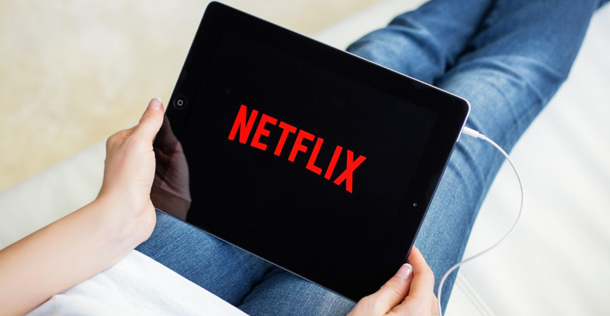



Comments
I’m not sure HOW these comments got all run together as one 23 line continuous paragraph here. I NEVER write more than 4 or 5 lines at the most for a single paragraph or it makes it awful to read. Occasionally I say a lot, which makes it all the more crucial it’s easy to read. I hate how this looks!
Since I’m here again per today’s link, I want to correct what I said about the new ‘Magnum, P.I.’ 2 years ago. I made an assumption that fortunately turned out to be completely wrong, and am very glad it was. The new version is BETTER than the original. The characters and actors have a great chemistry, and are all very likable. It has a real story (!) with action as needed here and there, and almost no pyrotechnics. In other words a show for intelligent people!
Yes, it does seem Streaming TV has a future. With less time to watch though due to busier lives and having to work more hours, plus life getting more complicated by the day, the dizzying array of over-choice you describe here just makes the complication of it that much more of a nightmare. We have too much NOW as it is, when it comes to television overall, yet almost nothing worth watching on traditional networks CBS, ABC, Fox etc. NBC is SO beyond a lost cause it’s not even funny, except for the Olympics and the Nightly News. Their retro, off-shoot network COZI-TV however, is very good; same thing with CBS’s Decades-TV. Because of what I stated, there is, very definitely, a need for the likes of Netflix, Hulu, Amazon, AMC and more. THIS is where you do have quality, original programming no longer found on ‘regular’ TV, much less the 90% unwatchable, gimmick reliant films in regular theaters! Occasionally even THEY do put out quality films without near-constant gunfire, explosions/fireballs, car crashes and all the other cliched crutches of destruction. Those films are mainly in limited-release theaters however. Without AMC, we never would have had the brilliant ‘Mad Men’, or without ‘Netflix’ the nearly as high quality ‘Feud’ last year. Though done by different people, you could see they were aiming at ‘Mad Men’ quality, and largely succeeded. The ‘Feud’ topic didn’t interest me initially, but LOVE Jessica Lange and Catherine Zeta-Jones. I even have to hand it to Susan Sarandon here too, though overall she’ll do (and does) pretty much anything for a buck. She’s not the only one by any means. Soon we’ll have Ben Affleck’s on/off wife kind of reprising her ‘Alias’ TV role in ‘Peppermint’ with every cliche I mentioned earlier. Then there’s ‘The Nun’ with every cliched modern HORROR film crutch. Ohhh, I’m sooooo scared! The remake nightmare just gets worse and worse on regular TV and films. CBS is about to come out with a third new unwatchable version vintage series following the horrible ‘Hawaii 5-0’ and ‘MacGyver’. This time it’s ‘Magnum P.I. Watching any trailers is unnecessary, BUT will prove my point even further, of course. Common sense, moderation, being very selective and not getting yourself caught up in mega-company greed to steal your time and money is the bottom line. Thanks for running the 1951 cover ‘Postcards’ asking the early question of a pay-TV future. I saw it last Friday when I was putting in ‘News of the Week’ comments and a slew of others over the past several days, Troy. I failed to mention (now apologizing) what a great Stevan Dohanos cover it was/is, with all that beautiful detail lit up online.